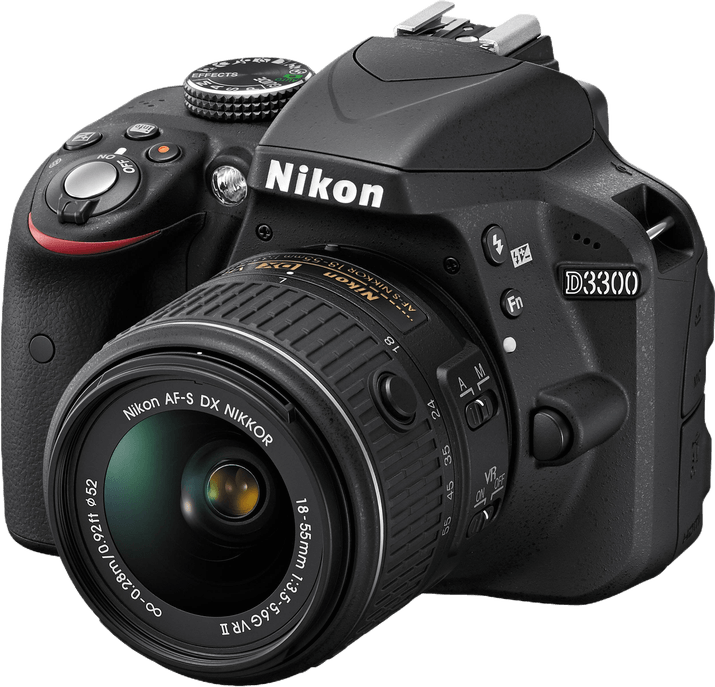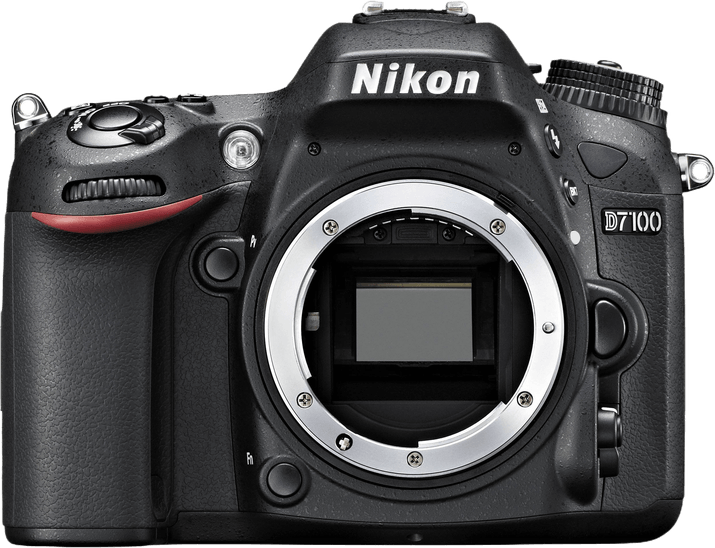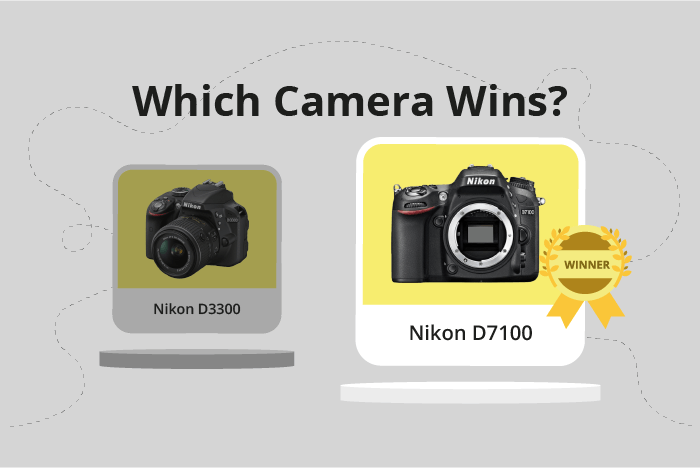Nikon D3300 vs D7100 Comparison
Nikon D3300

Nikon D7100

The Nikon D7100 comes out on top with a score of 65/100, compared to the Nikon D3300‘s score of 55/100. Both cameras are DSLRs and were released in the early 2010s, with the D3300 being released in 2014 and the D7100 in 2013. They share similar dimensions, but the D7100 is larger and heavier at 136 x 107 x 76mm and 765g, while the D3300 measures 124 x 98 x 76mm and weighs 430g.
The D7100’s higher score reflects its superior performance and features, justifying its higher launch price of $1200 compared to the D3300’s $650. The D3300, on the other hand, has the advantage of being lighter and more compact, making it more convenient for casual photographers and those on the go.
Taking all factors into consideration, the Nikon D7100 is the better camera in terms of performance and features, while the Nikon D3300 is more suitable for those who prioritize portability and affordability.
Nikon D3300 vs D7100 Overview and Optics
The Nikon D7100 edges out the Nikon D3300 in the optics comparison with a score of 67/100 to the D3300’s 64/100. Both cameras share several specifications, such as a 24-megapixel CMOS sensor, an APS-C sensor size, a Nikon F DX lens mount, and a lack of image stabilization.
The D7100 gains its advantage with a higher shooting speed of 6 frames per second, compared to the D3300’s 5 frames per second. Additionally, the D7100 has a slightly better DXOMARK sensor score of 83, while the D3300 scores 82. These differences contribute to the D7100’s superior performance in capturing fast-moving subjects and producing marginally better image quality.
On the other hand, the D3300 has an Expeed 4 processor, which is an upgrade from the D7100’s Expeed 3 processor. This allows the D3300 to process images more efficiently and potentially improve overall performance. However, this advantage does not outweigh the benefits of the D7100’s higher shooting speed and DXOMARK sensor score.
In comparing the optics of the Nikon D3300 and D7100, it is clear that the D7100 is the superior choice due to its higher shooting speed and slightly better sensor performance. While the D3300 does have a more advanced processor, this advantage is not enough to compensate for the D7100’s other strengths. Therefore, the Nikon D7100 comes out as the winner in this optics comparison.
Nikon D3300 vs D7100 Video Performance
The Nikon D7100 takes the lead in video capabilities with a score of 57/100, just one point ahead of the Nikon D3300, which scores 56/100. Both cameras share some identical video specifications, including Full HD video resolution and a maximum video dimension of 1920 x 1080. These shared features ensure that both cameras produce high-quality video recordings.
The D7100 surpasses the D3300 with its built-in time-lapse functionality, which allows users to create time-lapse videos without needing additional equipment or software. This advantage makes the D7100 more versatile and convenient for shooting creative and dynamic videos.
On the other hand, the D3300 outshines the D7100 in terms of maximum video frame rate, offering 60fps compared to the D7100’s 30fps. This higher frame rate allows the D3300 to capture smoother motion and provides more flexibility when slowing down footage for slow-motion effects.
Despite the D7100’s higher video score, the D3300’s superior frame rate and the D7100’s time-lapse feature make each camera better suited for different video applications. Users seeking time-lapse capabilities will prefer the D7100, while those prioritizing smooth motion and slow-motion effects will find the D3300 more appealing. Ultimately, the choice between these two cameras depends on the specific video requirements of the user.
Nikon D3300 vs D7100 Features and Benefits
The Nikon D7100 emerges as the winner in the features category with a score of 59/100, compared to the Nikon D3300’s score of 41/100. Both cameras share some common specifications, such as the lack of a touchscreen, flip screen, GPS, and Bluetooth. However, the D7100 surpasses the D3300 in several aspects, making it the superior choice in terms of features.
The D7100 boasts a larger screen size of 3.2 inches, compared to the D3300’s 3-inch screen. Furthermore, the screen resolution of the D7100 is significantly higher at 1,228,800 dots, while the D3300 has a resolution of 921,000 dots. This difference provides users of the D7100 with a clearer and more detailed display for reviewing images and navigating the camera’s settings.
One of the key advantages the D7100 has over the D3300 is its built-in Wi-Fi capability. This allows users to easily share their photos, remotely control the camera, and transfer files without the need for additional accessories or cables.
On the other hand, the D3300 does not have any notable advantages over the D7100 in terms of features. It lacks the Wi-Fi capability, has a smaller screen, and a lower screen resolution.
Taking into account the differences in features, it is evident that the Nikon D7100 is the better choice for those who value a larger, higher-resolution screen and Wi-Fi connectivity. The D3300, while lacking in these features, may still be suitable for those who prioritize other aspects such as price or portability.
Nikon D3300 vs D7100 Storage and Battery
The Nikon D7100 outperforms the Nikon D3300 in storage and battery, scoring 76 out of 100 compared to the D3300’s score of 32. Both cameras share compatibility with SD, SDHC, and SDXC memory cards and lack USB charging capabilities.
The D7100 surpasses the D3300 with its dual memory card slots, providing more storage flexibility and backup options. Additionally, the D7100 boasts an impressive battery life of 950 shots, significantly more than the D3300’s 700 shots. The D7100 uses the EN-EL15 battery type, contributing to its longer battery life.
On the other hand, the D3300 has only one memory card slot and a shorter battery life due to its EN-EL14a battery type. However, this camera may still be suitable for casual photographers who do not require extensive storage or battery capacity.
Considering these points, the Nikon D7100 emerges as the superior choice for photographers needing ample storage and extended battery life, while the Nikon D3300 may suffice for those with more modest requirements.
Alternatives to the Nikon D3300 and D7100
Are you still undecided about which camera is right for you? Have a look at these popular comparisons that feature the Nikon D3300 or the Nikon D7100:

